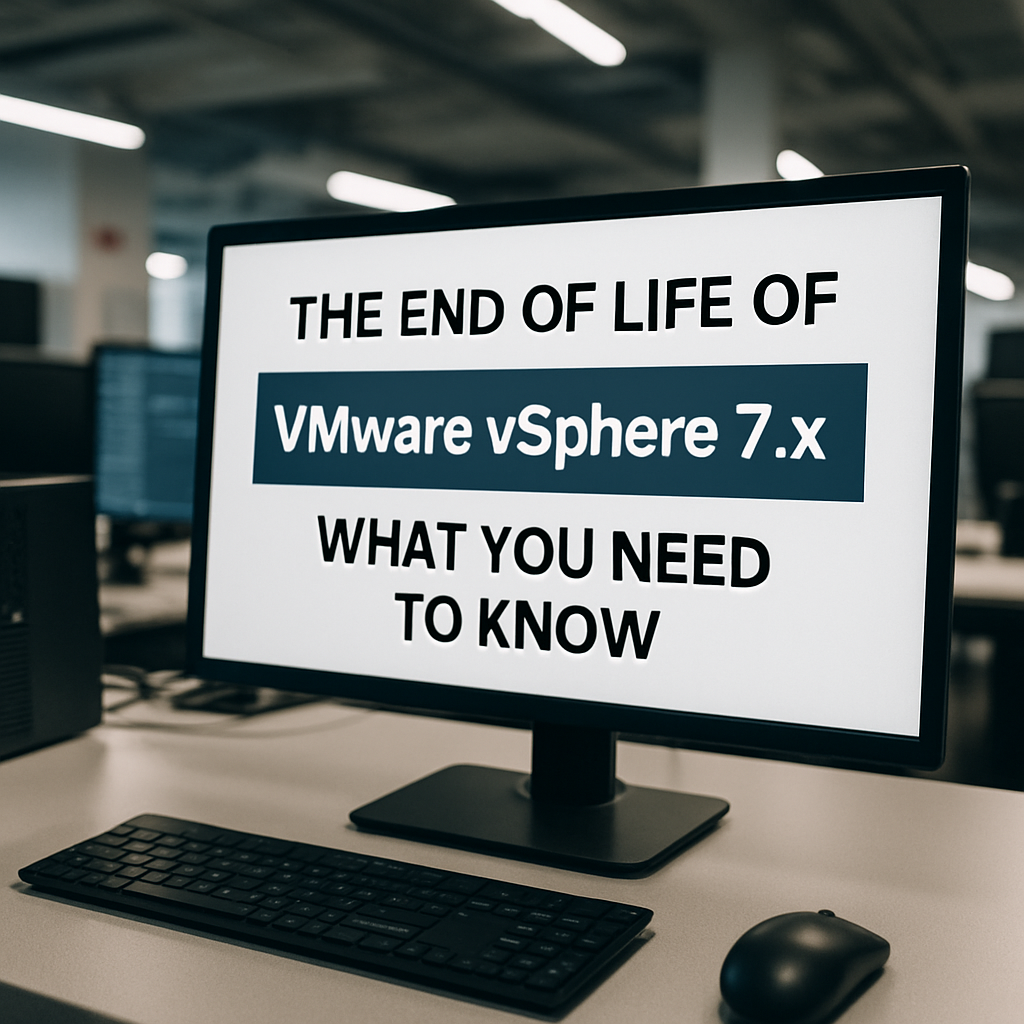Every software platform has a lifecycle, and VMware’s vSphere is no exception. With the end of life for vSphere 7.x approaching, IT teams need to prepare. Staying on an unsupported hypervisor introduces risk, while proactive planning ensures stability and security. Here’s what you need to know.
VMware’s Support Lifecycle Model
VMware (now Broadcom) follows a two‑phase lifecycle for major vSphere releases:
- General Support (5 years): Full updates, bug fixes, security patches, and hardware compatibility.
- Technical Guidance (2 years): Limited support. No new hardware compatibility, fewer fixes, and reliance on self‑service documentation.
After these periods, the software reaches End of Support (EoS), meaning no official fixes or updates.
Key Dates for vSphere 7.x
- End of General Support (EoGS): October 2, 2025
- End of Technical Guidance (EoTG): April 2, 2027
After October 2, 2025:
- No new patches, security fixes, or hardware certifications.
- Only previously released updates remain accessible via self‑service.
- Limited guidance available during the Technical Guidance phase.
Risks of Staying on vSphere 7 After EoL
Remaining on vSphere 7.x beyond support deadlines carries real challenges:
- Security vulnerabilities: No patches for new exploits.
- Compliance risks: Unsupported software often fails audits.
- Third‑party incompatibility: Tools like backup, monitoring, and integrations may drop support.
- Hardware lock‑in: Newer servers may not be certified for vSphere 7.
- No vendor recourse: Critical issues may have no official fixes.
Migration Paths
Organizations have several options:
- Upgrade to vSphere 8 (or newer)
- Best path for continued support.
- Requires hardware and integration checks.
- Extended or Third‑Party Support
- May be available for a cost.
- Typically limited in scope.
- Migrate to Alternative Platforms
- Shift workloads to Hyper‑V, Nutanix AHV, or public cloud.
- May align with cloud‑first or hybrid strategies.
- Hybrid Transition
- Run vSphere 7 alongside newer environments.
- Phase workloads gradually.
Next Steps
The end of general support for vSphere 7.x on October 2, 2025 is a firm deadline. Organizations still running on vSphere 7 should begin planning their path forward now.
Customers are encouraged to review their environments and plan accordingly to upgrade their current vSphere infrastructure to version 8.X or higher to remain supported.
Please reach out if you would like Helient Technologies’ highly experienced engineers to assist with the planning or deployment of these upgrades.


